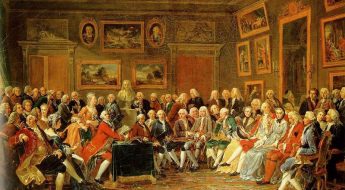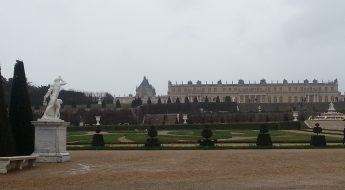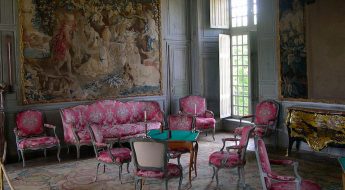Part 4.5 is the penultimate part of Chapter 4, and the second of two parts about the royal family’s disastrous, failed flight to Varennes in the summer of 1791.
A Childhood at Versailles consists of the first 5 chapters of the memoirs of Mme de Boigne (1781-1866), née Adèle d’Osmond, who was a French salon hostess and writer. She was born in the Château de Versailles and lived at the court of Louis XVI and Marie-Antoinette until her family fled to England during the Revolution. Later in her long life, she married a rich soldier of fortune 30 years her senior, hosted a brilliant salon in Paris, and became an intimate of the last French queen, Marie-Amélie, consort of King Louis Philippe (r. 1830-1848). Childless herself, Mme de Boigne addressed her memoirs to her grandnephew. The memoirs were not published until 1907, under the title Récits d’une tante, or An Aunt’s Tales. They’ve never been published in English, as far as I know, so I’ve decided to translate the first 5 chapters, the ones that take place mainly at Versailles, and post them here on this blog for interested readers to enjoy for free.
The chapters are quite lengthy, so I’ve broken each one into several parts. In Part 4.5, the author sets down what she remembers of the Marie Antoinette’s account of the flight to Varennes, as told by the Queen to her father.
A Childhood at Versailles, Chapter 4, Part 5 (4.5)
There are many accounts of these events, but the authenticity of this one, from the Queen’s own lips, has decided me to set down the details that have remained in my memory of those that I heard my father recount.
The traveling carriage had been ordered by Mme Sullivan (since then Mme Crawford), who had been so employed by M de Fersen on behalf of one of his friends, the Baronne de Korff. It was for this same baroness, her family, and her suite that a passport in perfectly good order and a permit for post horses had been obtained. The carriage had for several days been on Mme Sullivan’s premises. She had taken it upon herself to put in it the necessary items for the royal family’s use.
One would have wished for the inhabitants of the Tuileries to disperse, but they did not want to be separated from one another. The danger was great, and they wanted, they said, to escape or perish together. Monsieur and Madame, who each consented to leave on their own, got away without obstruction. In truth, they only needed to reach the nearest frontier, while the King, not being able to leave France, had but one route to follow. Many precautions were taken, but one was lacking.
The Baronne de Korff’s berline was to have been occupied by the King, the Queen, Madame Élisabeth, the two children and the Baron de Viomesnil. Two bodyguards in livery were on the box. Mme de Tourzel was only informed of the departure at the last minute. She asserted the rights of her office (les droits de sa charge), which authorized her never to leave the Dauphin. The argument was overriding for those to whom it was addressed, and she replaced M de Viomesnil in the carriage. From then on, the royal family had no one able to act for them in case of an unexpected circumstance. No ordinary bodyguards, as devoted as they might be, would assume that responsibility. This decision was seen for what it was too late for it to be remedied.
The day and the hour having arrived, the King and Queen retired as per custom and went to bed. They got up right away, dressed in the clothes that they had sent for, and left the Tuileries on their own. The King gave his arm to the Queen; passing through the gate, the buckles of his shoes caught each other and he almost fell over. The sentinel helped to steady him, and inquired if he had hurt himself. The Queen thought they were lost, but they passed through.
While crossing the courtyard, they met M de Lafayette’s carriage; the torches carried by his servants shone on the august couple. M de Lafayette lifted his head, and they were anxious that they had been recognized, but the carriage carried on its way. Finally, they reached the corner of the courtyard. M de Fersen was watching from a distance; he hurried forward and opened the door of a hired carriage in which Mme de Tourzel and the two royal children were already seated. The Dauphin was dressed as a girl, the only disguise that had been adopted. They waited a few minutes for Madame Elisabeth. Her exit from the palace had been beset with difficulties. A devoted wardrobe maid lead her by the arm.
The Marquis de Briges was the coachman of this carriage, and the Comte de Fersen mounted the rear. They passed through the city gate easily. Beyond it, the traveling carriage was not where it was expected. They waited for more than an hour, and finally realized that they had gone through the wrong gate. The first place appointed for the rendezvous had changed, but M de Briges had not been warned.
In order to avoid going through any more gates, they had to make a rather long detour to get to the one where the other carriage was waiting. It was indeed there, but much time had been lost. The illustrious fugitives promptly got in. It was at this moment that M de Fersen gave his pistols, on which his name was engraved and which were found at Varennes, to one of the bodyguards who had none.
No incident hindered the progress of the journey; the postilions, well but not extravagantly paid, set a rapid pace. Seeing Charles de Damas at his post, the travelers flattered themselves that the delays attending their departure would not have unfortunate consequences. They began to feel a certain sense of security. It was very hot, and the Dauphin suffered from it a great deal. The blinds were raised, and, arriving at the Sainte-Menehould relay, the drawing of the blinds on the side of the King and Queen, who were sitting across from one another, was neglected.
Their figures, and above all that of the King, were the best known. The King noticed a man leaning against one of the wheels of the carriage looking at him attentively. He bent down as if to play with the children, and told the Queen to draw the blinds in a few moments, without hurrying. She obeyed, but sitting back up, the King saw the same man leaning against the wheel on the other side of the carriage and looking at him attentively. He was holding an écu in his hand, and seemed to be comparing the two profiles, but he said nothing.
The King said, “We are recognized. Will we be betrayed? It is in God’s hands.”
Nonetheless, the harnessing was completed. The man stayed leaning against the wheel in profound silence, not leaving it until the moment that it started moving. When they left the Sainte-Menehould relay, the poor fugitives believed they had escaped this new danger, and the King said that they must find out who the man was in order to reward him, for he had certainly recognized them; he was one in a thousand. Alas, he was to see him again.
What went on in the head of this man Drouet, for indeed it was he; did he have a moment of pity, a moment of doubt, or, Sainte-Menehould being a tiny hamlet, did he fear not being able to rouse enough people to stop the carriage? I do not know, but soon after he was on horseback and on the road to Clermont, of which he was the post master, and which he counted on reaching ahead of the travelers.
He was almost there, and surprised at not yet having overtaken the carriage, when he recognized some returning postilions.
“Is the carriage still far ahead?”
“We haven’t seen a carriage.”
“What!”
He then described it.
“It’s not on this road, but from the hill I saw a berline on the road to Varennes. Perhaps it’s the one.”
Drouet was in no doubt. In fact, at the fork in the road for Clermont and the road for Varennes, the bodyguards had made the postilions take the latter. There had made a slight fuss about it on the grounds that the relay was longer and that they ought to have warned the post, but they passed on and made such good time that Drouet had difficulty catching them up.
One might imagine the alarm of the travelers on recognizing the man from the wheel on a foaming horse. He angrily reproached the postilions for setting such a pace on such a long relay, and ordered them to slow it down while threatening to denounce them to the post master of Sainte-Menehould, and rode ahead himself. They did not dare to press the postilions, and, in any case, they still hoped to avoid the danger.
A relay prepared by the efforts of M de Bouillé should have been placed before the entry to Varennes. They had to cross the bridge situated at the exit of the little town, but they had only to get through it. Since there was an escort with the post horses, they flattered themselves that they would encounter no obstacle. The day was fading. The relay that should have been at the bottom of the hill before Varennes was not there. They hoped it would be at the top, but it was not there either. The bodyguards knocked on the glass.
“What to do?”
“Go on,” came the reply.
They arrived at the post. Night was falling; they were told that there were no horses in the stable. The postilions refused to do a double relay without resting their horses. While they were parleying, the Queen saw some dragoons pass by with their saddles on their backs. She hoped that the cavalry detachment and the relay were at last going to appear, but the post horses were at the other end of the town, the dragoon’s horses at the other, and the bridge separated them.
The travelers were enjoined to leave the carriage and to let the children rest while the postilions refreshed the post horses. They feared to excite suspicion by persisting in their earlier refusal, and they went into a house, but they had already been recognized and denounced. An overturned wagon on the bridge cut off communication with the detachment of dragoons, and the alarm was raised. When the Duc de Choiseul, who had got lost on the road, and who had put his faith in the arrangements made at Varennes arrived there, there was no time to save the King other than by putting the family on cavalry horses and making at the gallop for a ford. This could only be done by force and by using their pistols. M de Choiseul proposed this, but the King refused. He said that he would never consent to shed a drop of French blood. The Queen did not insist, but it was clear from her account that she would have adopted M de Choiseul’s proposition. In any case, she told my father that she had lost hope at the moment that the relay was not met and that she had understood then that they were lost.
Unfortunately, the Comte de Bouillé had put the all-important post at Varennes in the hands of his son, the Comte Louis de Bouillé. He conducted himself with unparalleled thoughtlessness and negligence. Without M de Bouillé’s paternal weakness, which had made him give this mission to a twenty-year-old, it is probable that the Revolution would have taken a different turn, perhaps even that nothing more would have come of it than some salutary improvements to the French constitution.
This Drouet, whom the poor King had earlier wanted to reward, turned out to be an insolent master towards the disconsolate family. Soon they were the butt of every sort of outrage. I do not remember any other details, if only that the Queen praised the proceedings of Barnave during that cruel return journey, above all in comparison to those of M de Latour-Maubourg.
Only one part remains of Chapter 4. Look for it in the first week of July, 2018.


















Leave a Comment